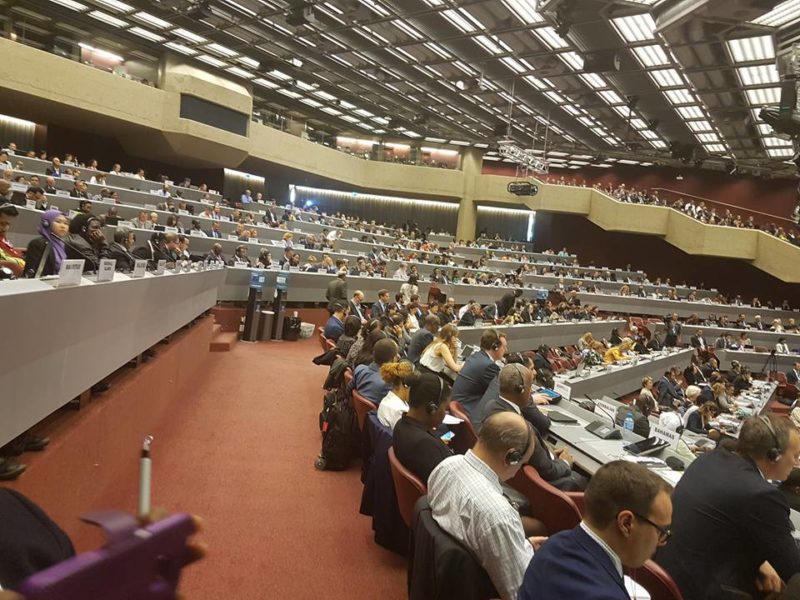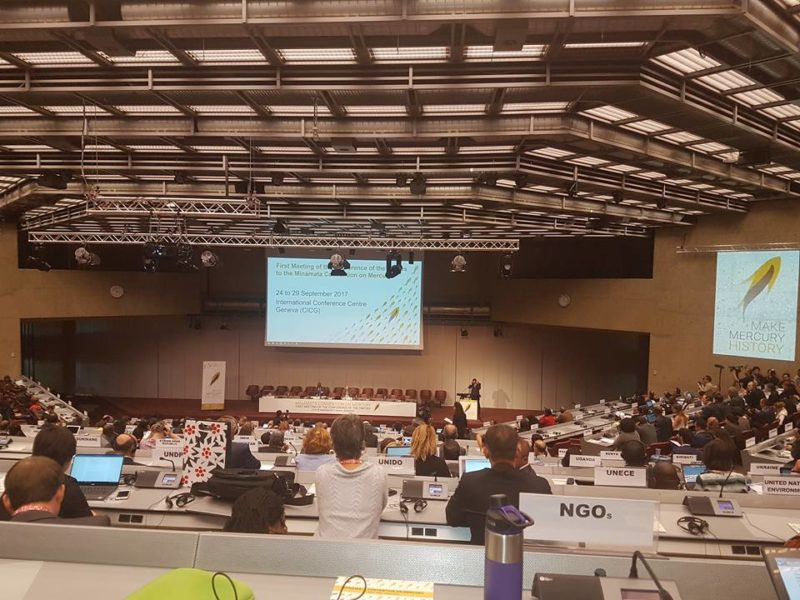More than 150 countries are gathering in Geneva this week to mark a major milestone in their efforts to fight mercury pollution. Mercury is one of the most dangerous chemicals to human health and the environment.

Mercury is a neurotoxin with a global reach. The heavy metal is released into the environment as a result of a number of human activities. In the environment, it enters the food chain, accumulates in the body and can harm the brain, heart, kidneys, lungs and immune system of people of all ages. Mercury is particularly harmful to unborn children and infants whose nervous systems are under development. Damage to the brain cannot be reversed. There is no known safe exposure level for elemental mercury in humans, and effects can be seen even at very low levels.
The Parties to the Minamata Convention on Mercury, which entered in to force on August 16, 2017, will now begin to implement the new global treaty which includes banning new mercury mines and phasing-out existing ones; regulating the use of mercury in artisanal and small-scale gold mining, certain industrial processes and the production of everyday items such as certain compact fluorescent lamps, batteries and teeth fillings; as well as controlling the emissions of mercury as a by-product from a range of industrial sectors – including coal combustion.
“This Convention will save lives,” said Erik Solheim, Head of UN Environment. “People around the world are being poisoned and it’s time for this to stop. Now the work begins to remove it from our industrial processes and keep it out of our bodies and our fragile ecosystems.”
Thousands of tonnes of mercury are emitted each year through releases to air, land and water. Mercury may be released naturally through the weathering of mercury-containing rocks, forest fires and volcanic eruptions. However, the most significant emissions come from human activities, particularly coal burning and artisanal and small-scale gold mining. Mining alone exposes up to 15 million workers and their families in over 70 countries to being poisoned by mercury, and this includes child labourers.
Like other heavy metals, mercury persists in the environment and builds up in human and animal tissues. Exposure to mercury occurs mainly through ingestion of fish and other marine species contaminated with methylmercury, its most toxic and bioaccumulative form. People are also exposed to elemental or inorganic mercury through inhalation of mercury vapour during occupational activities or spills or through direct contact from mercury use.
Mercury pollution is a global problem as it vaporises and can therefore be transported through the air over long distances far removed from its original emission source, polluting air, water and soil. As mercury is an element it is indestructible, and the Convention therefore also stipulates conditions for its interim storage and sound disposal once it becomes waste.

The Minamata Convention stipulates phase-out of manufacturing, import and export of these mercuryadded products by 2020. Several health care facilities in countries like South Africa, Brazil and the Philippines have demonstrated that phase out is feasible. Countries have been promoting the use of alternatives/mercury free medical devices, lessening exposure of the health professionals and the general public to mercury.
The Minamata Convention contains provisions that relate to the entire life cycle of mercury, including controls and reductions across a range of products, processes and industries where mercury is used, released or emitted. It also addresses primarymining of mercury, its export and import, its safe storage and its disposal once it is waste.
Under the Convention, countries are to:
Control mercury emissions from key industries (including coal, waste incineration, non-ferrous metals, and cement production)
Ban new mercury mining and close existing mercury mines after a period of time
Control trade in mercury
Work to reduce the use of mercury in artisanal and small scale gold mining – the largest source of mercury pollution
Promote international cooperation on mercury monitoring and innovation.
The UN Environment’s new report titled: “Global Mercury Supply, Trade and Demand” confirms artisanal and small-scale gold mining as the world’s largest source of mercury emissions (primarily in Africa, Asia and Latin America) followed by coal fire. The major mercury uses continue to be in artisanal and small-scale gold mining and for the production of vinyl chloride monomer, with these two applications responsible for over 60 percent of global mercury demand.
Artisanal and small-scale gold produces 12 to 15% of the world’s gold and employs around 15 million people, often in remote rural areas, including 4 to 5 million women and children, who often have little or no awareness of the risks posed by mercury, and safer alternativesto its use. Multiple programmes are in place to help miners shift to mercury-free mining processes, but the challenges are vast.
Signed by 128 countries and ratified by 80 countries and the European Union, the Convention takes its name from the most severe mercury poisoning disaster in history, which came to light in Minamata, Japan, in May 1956, after sustained dumping of industrial wastewaters into Minamata Bay, beginning in the 1930s. Local villages who ate fish and shellfish from the bay started suffering convulsions, psychosis, loss of consciousness and coma. In all, thousands of people were certified as having directly suffered from mercury poisoning, now known as Minamata disease.
